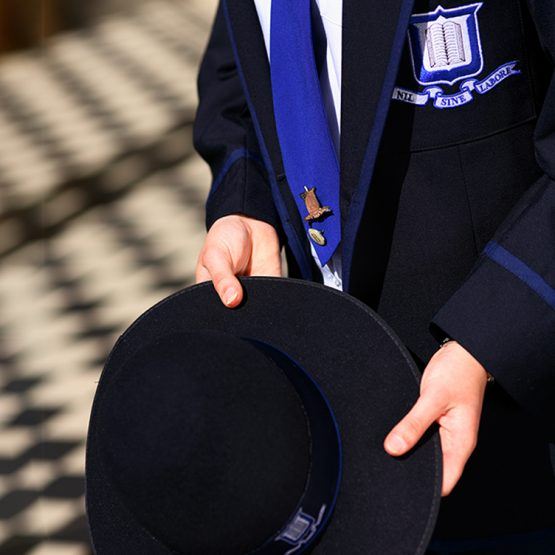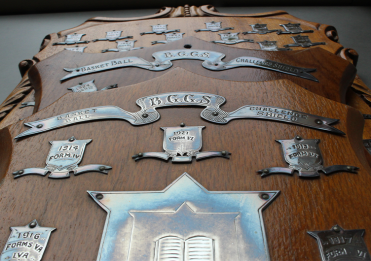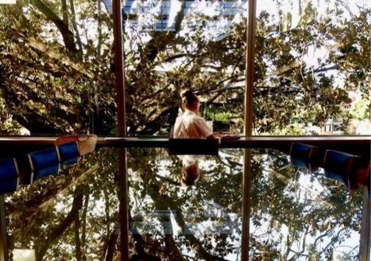Gate Duty Books and the curious repeated mention of gloves. Why do these two objects seem to have such symbiosis?
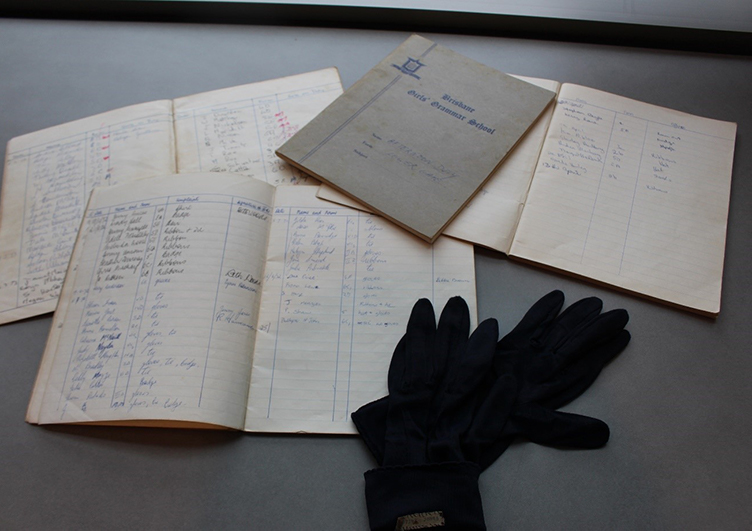
1971, 1972, 1973 Gate Duty books and Christine Jones' 1972 navy gloves

1972 Christine Jones’ (Woodford) gloves
‘There were repercussions for non-compliance—the prefects would stand at the gate in the afternoon and inspect your appearance as you left. If you had a ladder in your stockings or a hole in your gloves, you had to go back in and repair them before leaving. If not wearing gloves or hat—detention!’
Thus was the memory of Christine Woodford (Jones, 1972), a self-professed compliant Grammar girl. Why were navy gloves part of the Grammar uniform? Were they always part of the uniform? What did girls think about this often-frustrating element of Grammar life and the subsequent Gate Duty and Detention Books? When did gloves disappear from the Grammar wardrobe?
Historically, gloves were an integral part of any fashionable person’s wardrobe, and they had both practical and symbolic uses. In earlier centuries, they were thought to provide protection from disease, be functional in daily work and activities, and keep women’s hands soft and unblemished and, therefore, highly attractive. They also represented wealth and power, even purity, and provided a way of communication when men wished to issue a challenge to another, or for women to display refined social etiquette and a privileged existence.
For the Grammar girl of 1923, they were an essential element of her newly acquired uniform. Marjorie Puregger (Head Girl, 1923) shared with the Modern History class of 1992, her insights into the newly created 1923 Grammar uniform which included gloves. One of her duties as a prefect was to ensure all students wore their navy gloves—even in the hot Brisbane summers!
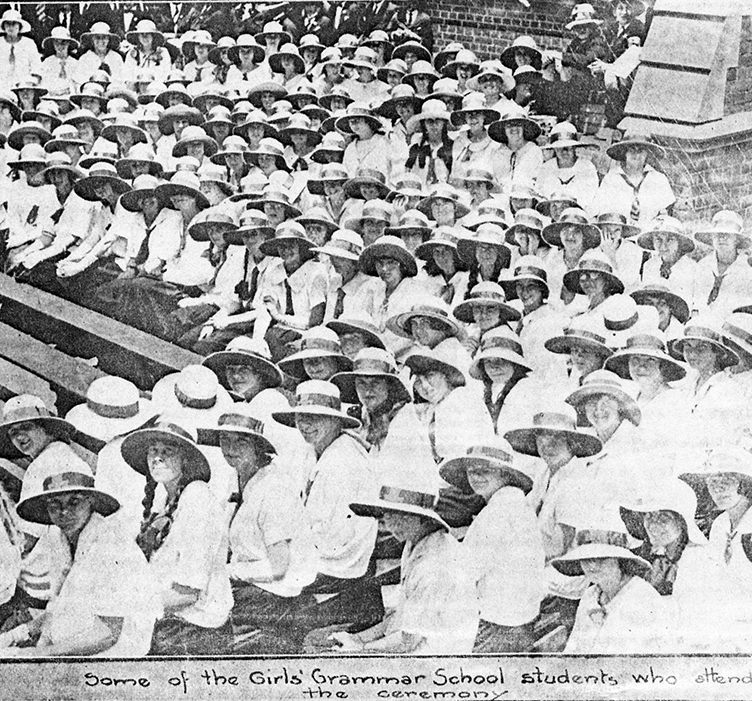
1924: Speech Day at BGS. Some girls with gloves in front row—perhaps prize winners
Across the School’s history, the uniform has essentially remained the same. There were variations of styles of blouses and skirts as many were homemade; however, the gloves remained a constant for more than 50 years, being purchased from stores such as McWhirters, McDonnell and East, or Finneys.
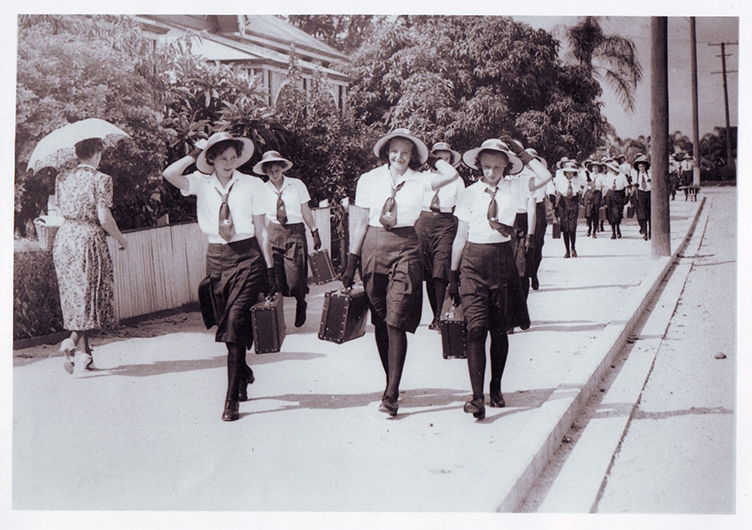
1949 The elegance of gloves, hats, and ports!
Celia Baker ( Fearnley, 1971) felt:
‘They were the bane of my mornings, trying to find them in the mad rush to get to the bus (along with a tie, badge, and hat)!’
As gloves were seen as an essential part of the uniform, it fell to the Prefects to ensure, once a Grammar girl stepped out of the gate, that she wore her uniform correctly—and this certainly included her gloves.
Jenny Underwood (Oswin, 1976) remembers:
‘I was shopping in David Jones and was standing at a counter and had taken off ONE glove to fish some change out of my purse. I felt a heavy hand on my shoulder and a senior blasted me for being “out of uniform” and sentenced me to detention the following week. I am actually not sure whether I fronted up to the detention room or not, but it sure scared the life out of me as a very naïve country kid.’
Thus enters the Gate Duty Book. Prefects on ‘Gate Duty’ carried with them a book to record uniform breaches. Every sixth form had its own. The archive has the 1971 and 1972 VIB books and the 1973 Afternoon Duty Lower Gate and Afternoon Duty Upper Gate detention books.
These books reveal interesting details about the Grammar girls of the 1970s. Not much has changed, with recalcitrant girls being entered into the dreaded Gate Duty book for a variety of misdemeanours such as wearing nail polish, not having a badge, incorrect or no ribbons, no hat, and a ‘chain around neck’. It does have a 2022 ring about it!
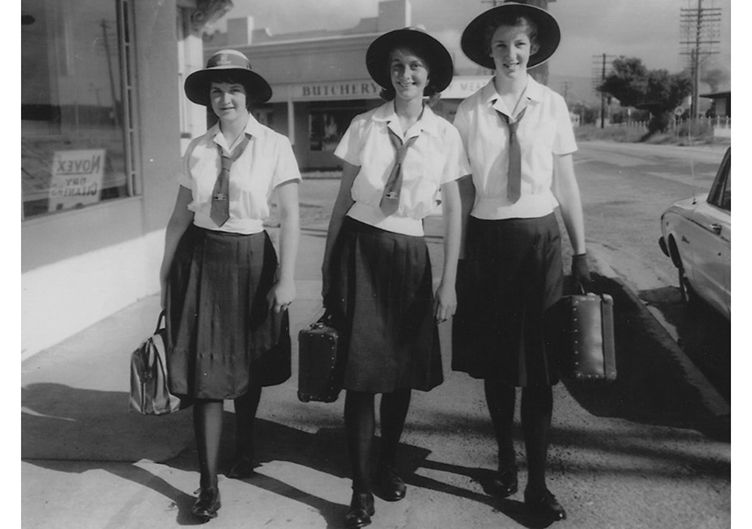
1963 Three students who may have appeared in the Gate Duty Book! Spot the misdemeanour
The important elements of the uniform noted in these books reflected how the uniform was expected to be worn. Singlets are repeatedly listed in the VIB 1972 Gate Duty book, some signed off by Beth Woods (Head Girl, 1972) and later our first Rhodes Scholar. It was certainly a 1960s/70s expectation that while ‘strap-hanging’ in a tram or bus, your skin was not exposed at the waistline, and hence regular singlet checks occurred.
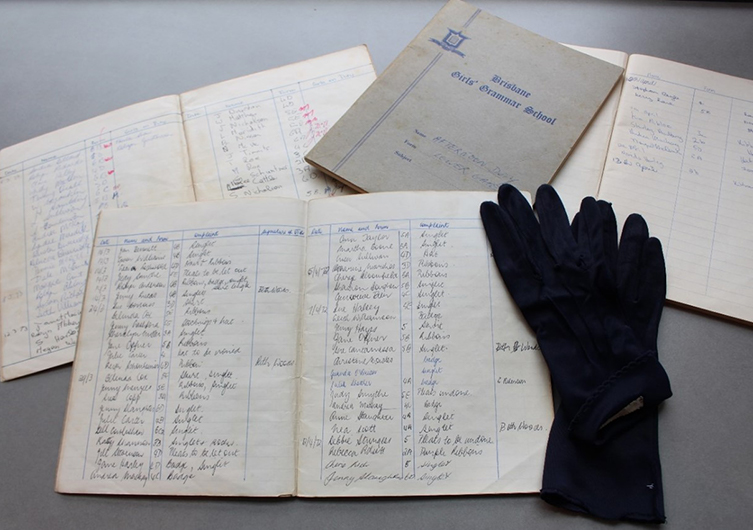
Gate Duty Books, gloves, and reference to singlets
Girls were expected to leave the School with neat hair (if the hair was past the collar, it had to be tied back, and pigtails were to be plaited if long enough). Girls were to have no jewellery, correct ribbons, hat in place, and, in winter, ties under jumpers and blazers and gloves on.
Although research has not yielded concrete evidence, the consensus among past 1970s students is that in 1971, with the introduction of the long white socks, the navy gloves were relegated to winter when the uniform was black stockings, blazer, navy velour hat, and navy gloves. Perhaps Summer was regarded as too hot for both the stockings and the gloves in semi-tropical Brisbane. Also, gloves were seen as no longer fashionably necessary. The 70s girls also felt that gloves were optional in the mid-70s, and then, without fuss or acknowledgement, the gloves disappeared from the uniform regulations in 1977.

1969 III Form Rail Tour—some students were in full winter uniform including gloves
However, the concept of the Gate Duty book did not. In 2022, you will still find a list being compiled by Year 12 students on afternoon ‘Gate Duty’. Perhaps this is considered an even greater necessity in modern times when afternoon roll call is now a thing of the past and those final neatness checks by the House Group teacher no longer occur!
What do the navy gloves and the Gate Duty books tell us about Girls Grammar? Does it signify that we were slaves to fashion? There was, and remains, an expectation that Grammar girls, no matter their generation, present neatly in public, uphold and respect the rules of the School, are proud of their Grammar affiliation, and provide positive examples for current and future Grammar girls. Whether arriving at School in 1923 or leaving in 2022, the correct uniform communicates each student’s readiness to embrace learning, illustrates respect for the institution, and pride in the Grammar community.
Mrs Pauline Harvey-Short (1971)
Manager, School History and Culture
References
1976 BGGS Magazine p3.
1992 BGGS Magazine p26.
BGGS Archives.
https://www.sothebys.com/en/articles/gloves-useful-symbols Downloaded 18.10.2022.
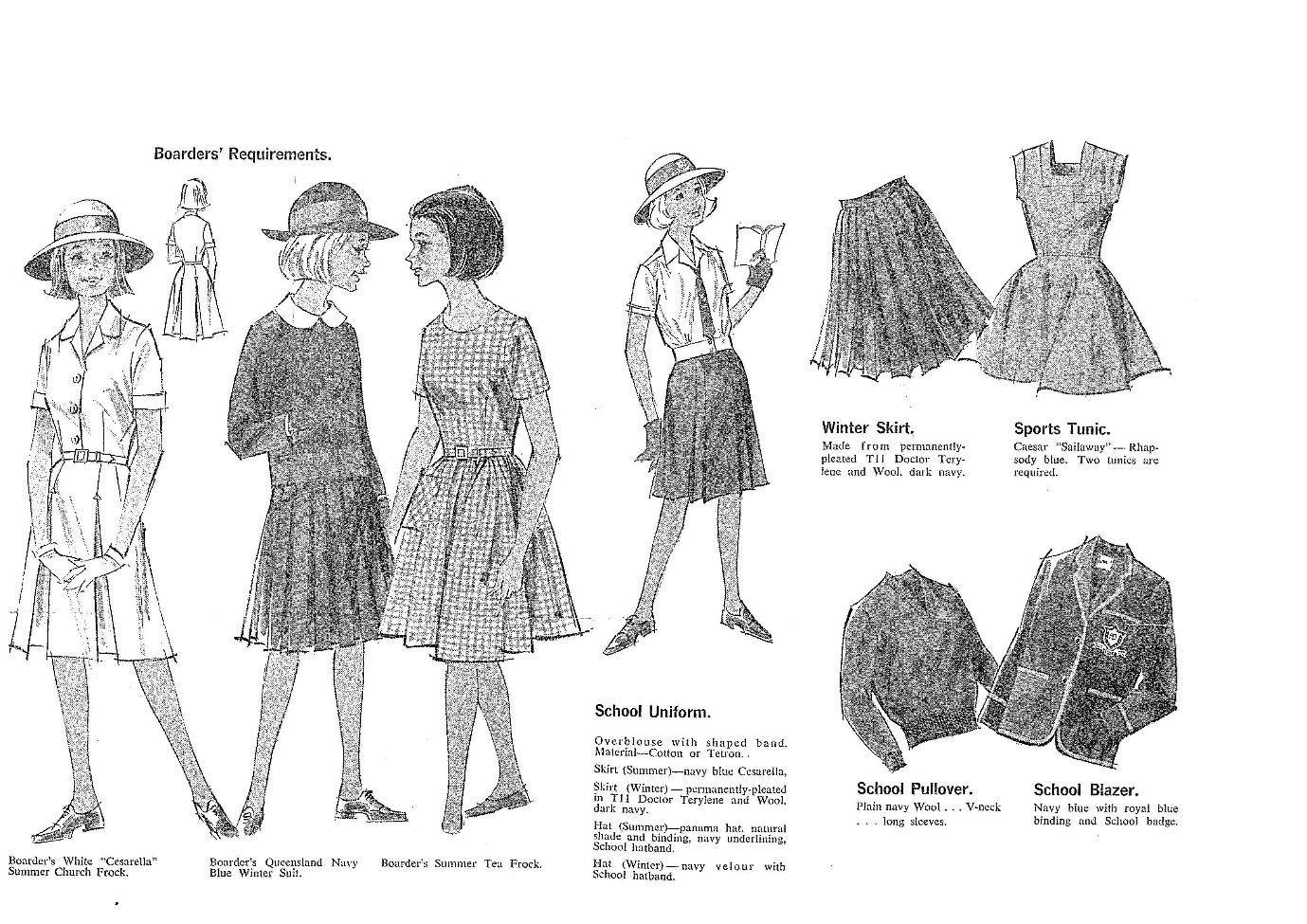
1963-1967 Uniform prospectus NB gloves
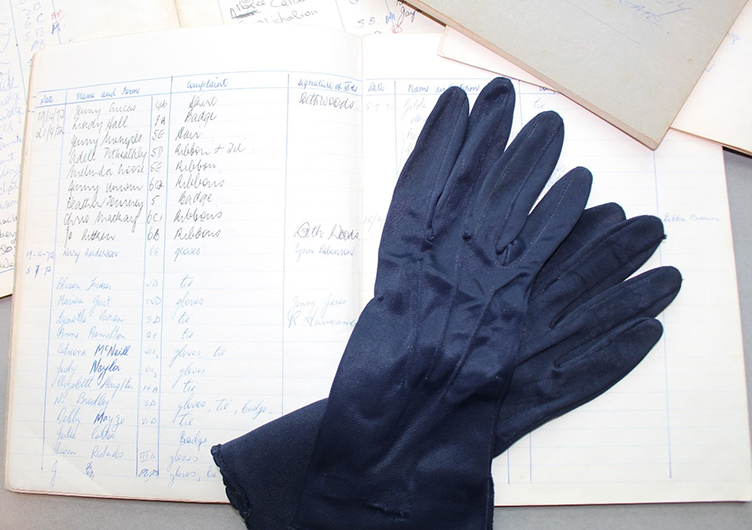
1971/72 VIB Gate Duty Book with Christine Jones’ 1972 gloves

